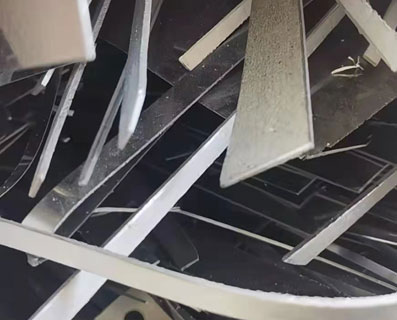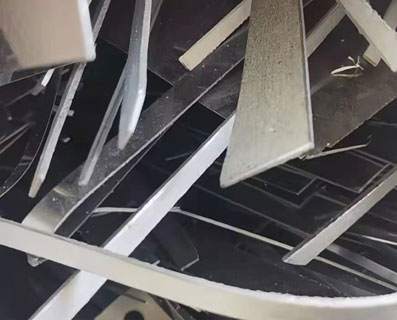English

What are you looking for?
Molybdenum milling chip | Mo: 100% |
Molybdenum sawing chip | 97%Mo/3%Cr |
Molybdenum slag | Mo: 25% |
The recovered molybdenum products can be used to produce industrial molybdenum oxide, ferric molybdenum, ammonium molybdate and other molybdate salts
Using molybdenum waste to produce sodium molybdate not only solves the problem of shortage of resources, but also turns harm into profit, turns waste into treasure, and solves the problem of molybdenum slag stacking, which has good economic and environmental benefits
The production of molybdenum products leftovers, waste, cutting materials through the rising China into molybdenum trioxide, sodium hydroxide into sodium molybdate solution. After purification concentration into sodium molybdate products.
If you are looking for a reliable molybdenum scrap supplier, please reach to us today and get our reasonable molybdenum scrap price!


At present, molybdenum smelting process is mainly composed of molybdenum concentrate boiled by oxygen pressure in autoclave, molybdenum leaching in ammonia water, ammonium molybdate, molybdenum powder produced by primary and secondary reduction, and molybdenum powder processed into various molybdenum products. The main sources of molybdenum waste are filter cake residue produced by ammonia leaching process, waste liquid after extraction and back extraction of mother liquor produced by acid precipitation process, and residual materials and cutting materials produced by molybdenum powder processing various molybdenum products.There are many kinds of molybdenum-containing waste and different regeneration methods. The common regeneration methods of molybdenum include sublimation method, zinc melting method and alkali leaching method, etc. The recovery rate of molybdenum is 96-98%.

Sodium molybdate products are used in the manufacture of alkaloids as well as reagents, dyes, molybdenum red pigments, molybdenum salts and light-fast color precipitants, and are also raw materials for the manufacture of flame retardants. Crystalline sodium molybdate can also be widely used as a corrosion inhibitor in recycling Cooling systems, metalworking fluids.
The use of molybdenum waste to produce sodium molybdate solves the problem of waste residue stacking in the production process of ammonium molybdate, and finds a feasible way for the reproduction of waste residues and cutting materials produced in the production of molybdenum products, and at the same time can produce considerable economic benefits.
Molybdenum scrap refers to discarded or surplus materials containing molybdenum, a metallic element renowned for its high melting point, corrosion resistance, and strength. Molybdenum scrap can originate from various sources such as industrial machinery, equipment components, or manufacturing leftovers. Despite being considered waste, molybdenum scrap retains its valuable properties and can be recycled and repurposed in diverse applications. Recycling molybdenum scrap not only conserves resources but also reduces environmental impact by minimizing the need for new molybdenum extraction. Additionally, repurposing molybdenum scrap contributes to sustainable practices and supports circular economy principles within industries reliant on this versatile metal.
Molybdenum serves as a crucial alloying element in steel production. When molybdenum units are returned to the furnace, they undergo melting alongside primary molybdenum and other raw materials to create steel. Approximately 60% of molybdenum scrap is dedicated to the production of stainless steel and constructional engineering steels. The remaining portion is utilized for manufacturing alloy tool steel, super alloys, high-speed steel, cast irons, and various chemical compounds. This comprehensive utilization of molybdenum scrap underscores its significance in enhancing the properties and performance of a wide range of steel products, contributing to the advancement of numerous industries, from construction to manufacturing and beyond.
The molybdenum recycling process involves several key steps to collect, sort, process, and reuse molybdenum-containing materials. Here's an overview of the typical process:
Collection: Molybdenum-containing materials, such as scrap metal, alloys, and byproducts from various industries, are collected from manufacturing facilities, scrap yards, and other sources.
Sorting: The collected materials are sorted based on their molybdenum content and composition. This step helps ensure that only suitable materials are processed for recycling.
Pre-processing: Before recycling, the sorted materials may undergo pre-processing to remove contaminants, coatings, or other impurities. This can involve cleaning, shredding, or crushing the materials to prepare them for further processing.
Melting: The pre-processed molybdenum-containing materials are melted in a furnace at high temperatures to separate the molybdenum from other elements and alloys. During melting, impurities and alloying elements may be oxidized and removed as slag.
Refining: The molten molybdenum is then refined to further purify the metal and achieve the desired composition and quality. Refining processes may include vacuum distillation, electrorefining, or other techniques to remove remaining impurities and improve the molybdenum's properties.
Solidification: Once refined, the molten molybdenum is cast into ingots, bars, or other forms for storage, transportation, and subsequent use in manufacturing processes.
Reuse: The recycled molybdenum products are then reintroduced into various industries for the production of new materials, components, or products. These recycled molybdenum materials retain the metal's valuable properties and contribute to sustainable resource management practices.
By following these steps, the molybdenum recycling process helps conserve natural resources, reduce energy consumption, and minimize environmental impact while supporting the circular economy model.
As industries worldwide seek sustainable solutions to resource management, the recycling of molybdenum and the utilization of molybdenum scrap have emerged as integral components of a circular economy framework.
Material Properties
Molybdenum scrap, sourced from various industrial processes, represents an invaluable resource waiting to be reclaimed and repurposed. Whether originating from manufacturing byproducts, discarded machinery parts, or end-of-life products, molybdenum scrap retains its intrinsic properties and can be recycled into new materials with minimal loss of quality.
Economic Benefits
Recycling molybdenum scrap offers significant cost savings compared to sourcing virgin molybdenum from primary production. With the energy-intensive nature of molybdenum extraction and refining, recycling scrap reduces energy consumption and associated costs, making it a financially viable alternative for industries.
Environmental Benefits
By diverting scrap from landfills and recycling it instead, industries reduce the need for additional mining and ore processing, thereby minimizing environmental degradation and resource depletion. Molybdenum recycling helps mitigate the environmental impacts of mining, such as habitat destruction, water pollution, and carbon emissions, contributing to a cleaner, healthier planet.
In addition to the environmental and economic benefits of molybdenum recycling, the utilization of molybdenum scrap fosters innovation and resource efficiency. By incorporating recycled molybdenum into new materials and products, industries can reduce their reliance on finite natural resources and promote a more sustainable manufacturing ecosystem.
As a leading supplier of refractory metals, HSG Metal provides an extensive array of molybdenum scrap products tailored to meet the requirements of businesses and industries of all scales. Our offerings encompass various grades and sizes, ensuring compatibility with your specific needs, while our competitive pricing on molybdenum scrap simplifies the procurement process for your operations. Reach out to us today to explore our molybdenum scrap options further and initiate the expansion of your supply chain.